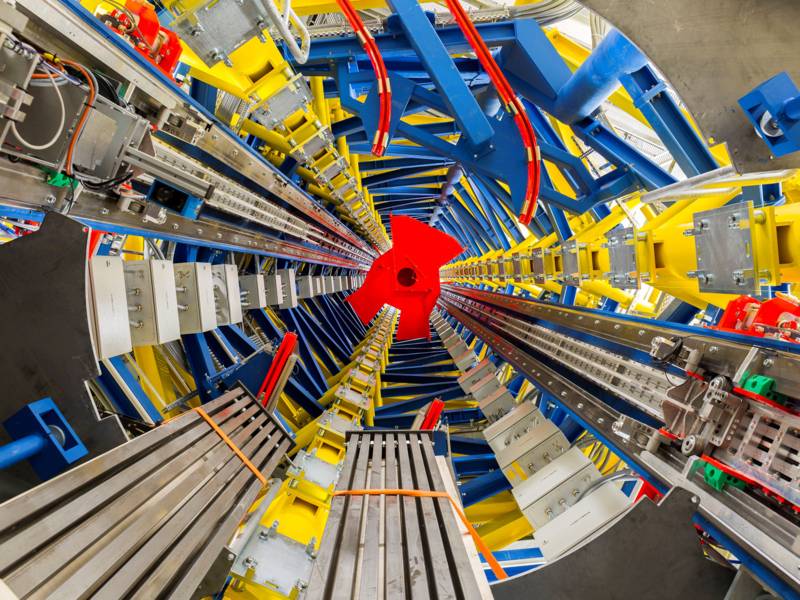Successful debut launch of the Einstein-Elevator
Scientists from HITec at Leibniz Universität Hannover realize conditions for space research here on Earth, opening new possibilities for researchers across the globe.
"Three - two - one - Go". The gondola weighing several tons shoots up into the yellowblue-red tower - then in virtual free-fall it returns towards its launch position and the fall is broken at the last second. The video of the Einstein-Elevator in operation (link: https://www.hitec.uni-hannover.de/en/large-scale-equipment/einstein-elevator/firstflight!) will not only inspire the scientists involved in quantum physics and manufacturing engineers, it demonstrates to scientists all over the world, the possibilities enabled by the successful drive and guiding concept of the EinsteinElevator.
"We have shown", says project manager and engineering scientist Christoph Lotz, "that we can control the linear motors used in roller coaster construction so precisely that they can compensate for the air resistance of the gondola and produce conditions of free fall for the experiment inside our drop tower. This means that in the gondola, the vacuum chamber, housing the future experiments, is virtually in microgravity for four seconds. This is because the movement resistance of the gondola (air resistance and friction losses of the guides) are precisely compensated by the drive during its flight.
"We create a repetition rate for experiments of about 300 per day, since we don't have to evacuate the entire tower for every experiment, unlike conventional drop towers", explains Professor Ludger Overmeyer, head of the Institute of Transport and Automation Technology and one of the two initiators of the Einstein-Elevator. "This opens up completely new possibilities for future space missions. We aim to test how additive manufacturing can be used in space travel, i.e. in microgravity. In the end, we want to understand how matter can be written into nothing.
His colleague and co-initiator Professor Wolfgang Ertmer of the Institute of Quantum Optics shares this enthusiasm. "As a quantum physicist, we eagerly await new opportunities to test quantum sensors and new quantum technological applications under space conditions. We need these, for example, for research on quantum gravity or for high-resolution measurements of the Earth's gravitational field in Earth observation missions to determine the changes in groundwater or the changes in ice layers."
And Christoph Lotz, who has been involved in the Einstein-Elevator project from the very beginning, has been a major driving force behind it. He now works daily in the underground command center on this ambitious project. He enthuses about what is still possible: "During the microgravity phase we will soon only have at most one millionth
of the Earth's gravitational force in the experiments, but we will also be able to simulate different acceleration profiles and thus different gravitational conditions - such as on the Moon or Mars, for example.'
And what will be in the gondola? "There are almost no limits to the imagination," says Alexander Wanner, project participant and managing director of HITec, "after all, it is even possible to conduct experiments with a so-called Bose-Einstein condensate in microgravity - close to absolute zero degrees Celsius. As long as an experiment is
'technically encapsulated', researchers will be able to simulate conditions for dust, which will be found on the Moon or Mars within its atmosphere".
The Einstein-Elevator will be available to researchers around the world for their experiments. Regular operation will start in spring 2020.

